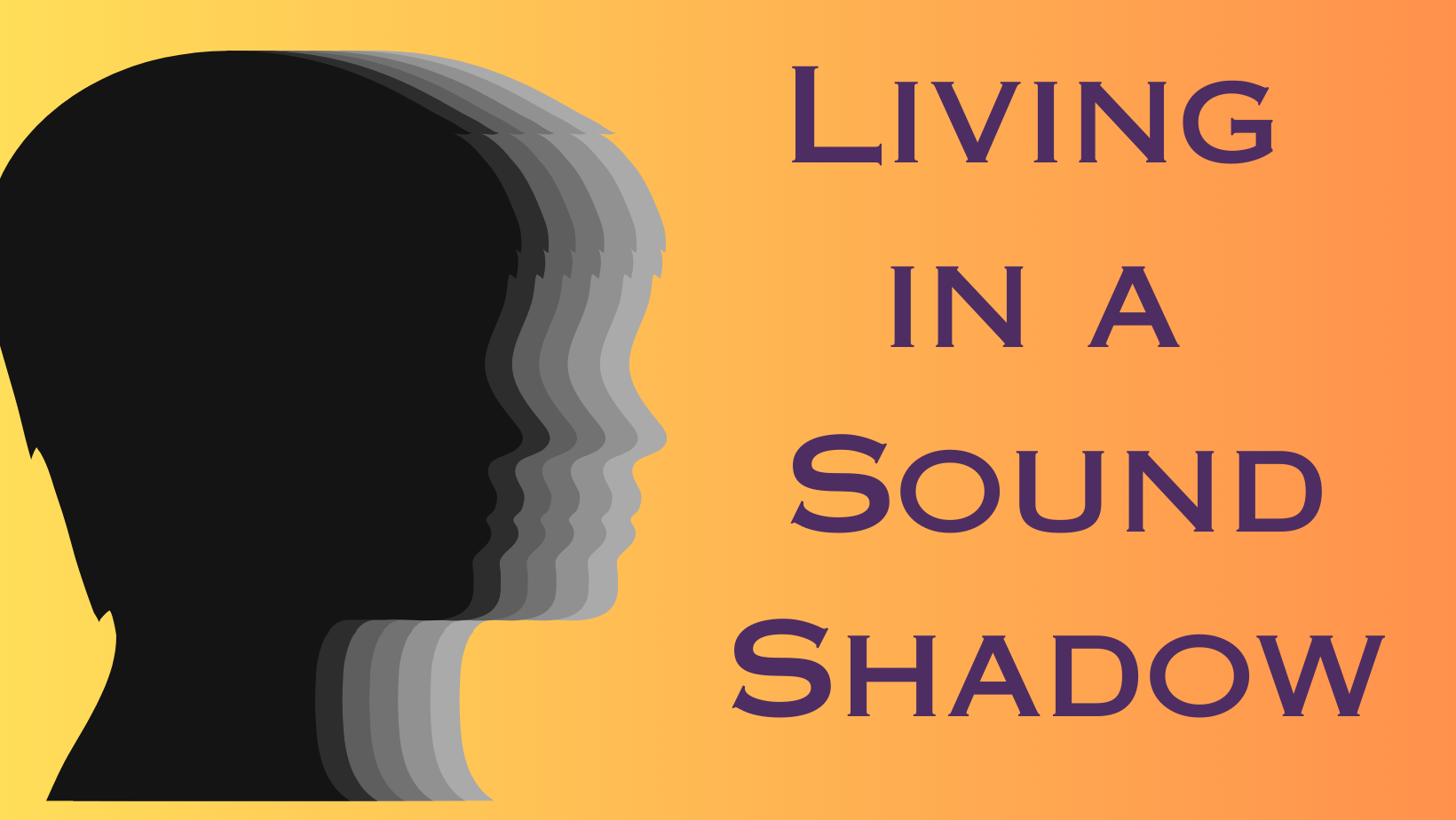I can’t hear through walls and around corners.
A more accurate statement would be that I can’t understand through walls and around corners. If I don’t see the sound source or, if I can’t see the lips of the human making the sound, I usually do not understand.
Those walls and corners cause sound shadows. Also known as an acoustic shadow, a sound wave is absorbed or obstructed by an object in its path. The effect on the listener on the other side of the barrier is a reduction in loudness. People with typical hearing may still understand the words. But for the listener with hearing loss, there is also a reduction in clarity to the point of undecipherability and we may not perceive the sound at all.
I was unfamiliar with the term until I reading John Cotter’s beautifully written memoir, the recently published Losing Music. Cotter talks about being settled into the sound booth (what I call the torture chamber), cut off visually and acoustically from all sounds except those the audiologist was about to play into his headphones. “…sound shadows: a wall too thick to hear behind, a wind to take your words away.” (Cotter, J., Losing Music, 2023)
Sound shadow – a charming, poetic term for barriers for people with hearing loss.
A physical barrier, for example a wall, absorbs high frequencies more easily than the low tones. Which is why, should the Hearing Husband call out to me from the laundry room (something he knows he shouldn’t do), his “honey come here” is perceived by me as “Ugh ugh heeee”. But, I go there, because I’ve heard the sound and now I need to know what’s going on with my husband. I have always done the running to out-of-sight speakers in my life because it’s faster than the horrendous, time-wasting back and forth of “did you call me?”, “yes”, “what?!” My impatient habit has probably enabled poor communication through the years, but it has also helped me keep my youthful figure.
Sound shadows also cause of difficulty in sound localization. If the sound wave hits the right ear first, the head causes a sound shadow for the left ear. For people who don’t have hearing loss, that might not be much of a problem. But for those of us who do, it’s more challenging. Prior to my cochlear implant, sound always seemed to come from the left. If a group of us heard a bird, my friends would be pointing to it up to the right, whereas I would be waving up high to the left. After my right-side implant, the high frequency bird sounds now all seem to come from the right. It’s a minor burden in my life with hearing loss.
Sound shadows are part of my life. They have a scientific explanation and real life consequence: a physical barrier throws a shadow on my ability to hear and understand.
The undergrowth in a forest distorting the sounds of critters.
My front door, closed, separating me from the sounds outside.
Any closed door blocking communication between me and the person on the other side. Such as a three-year-old who has locked the bathroom door from inside.
Anyone who neglects to get my attention and who thinks speaking to the back of my head will work.
In my life, communication is not subtle. It must be intentional, head on, face to face, eyeball to eyeball. Its occasional loudness may breach the comfort zone of many people.
I’m glad I now know this term because the next time the Hearing Husband calls from around the corner or up to my office, I can reply with “sound shadow!” Or, if I’m grumpy, “Stop sound-shadowing me!”








Brilliant
Tears are falling from my eyes
So profound
If only my family and friends would understand
Thanks much, Gael. Somehow it’s comforting to have a name attached to one’s experience.